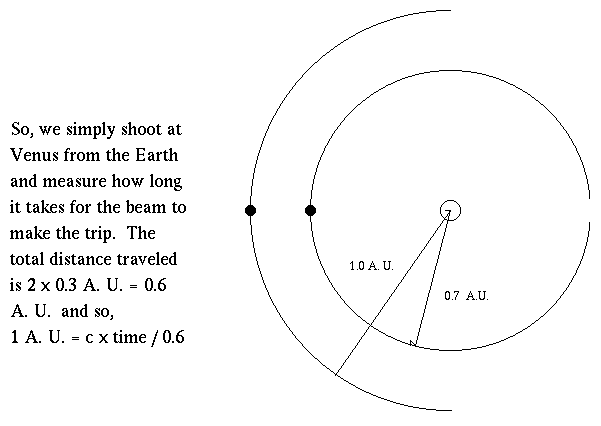Astronomical Unit
The determination of the Astronomical Unit is
easy since we know the scale of the Solar System. Given
Kepler's Third
Law of Planetary Motion,
that is, the orbital period
squared of a planet is equal to semi-major axis of its orbit cubed if the
orbital period is measured in years and the semi-major axis of the orbit
is measured in astronomical units (A.U.), we use
the orbital periods of the planets to
imply the sizes of the orbits of the planets. For Venus and Earth
- Venus: a ~ 0.7 A. U.
- Earth: a = 1.0 A. U.
The Earth, at closest approach, is 0.3 A. U. from Venus. This
information, although useful, is not what we want.
We want to figure out how many kilometers or miles or meters, or
... are contained in 1 A. U. We accomplish this task as follows.

Because radiation travels at the speed of light (c
= 300,000 km per second),
we can figure out the distance to Venus in km.
The astronomical
unit is found to be roughly 149,000,000 kilometers.
The A.U. is then used to determine the radius of the Sun and the
luminosity of the Sun. Knowing the distances to other
stars is important because it leads to estimates of their luminosities.
The exercise of finding distances to objects in the Universe turns out
to be a crucial exercise for many subfields of astronomy.
Other than this direct method of determining distances, the
most reliable method is known as
Annual Trigonometric Parallax.

